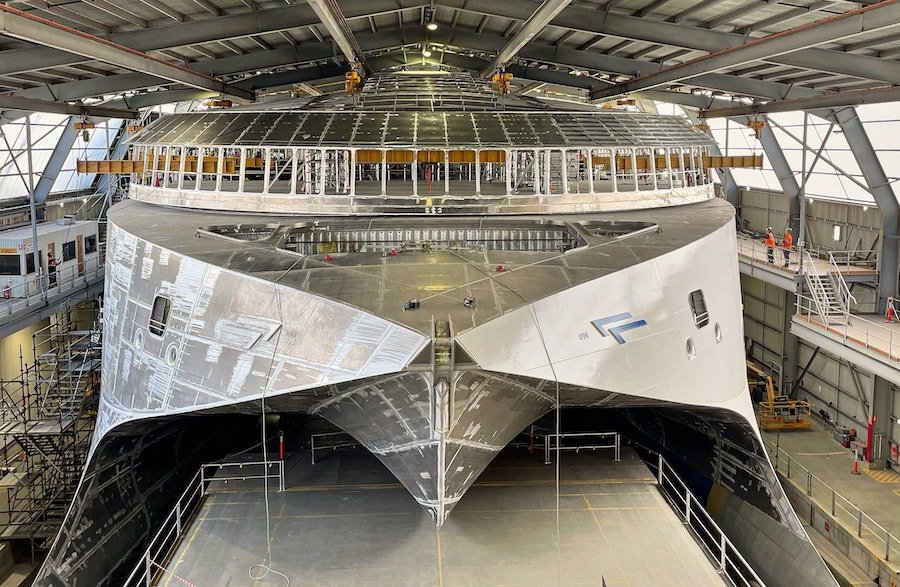World’s Largest Electric Ferry Is Coming to Life in Tasmania

Incat Tasmania has recently celebrated one of the most important milestones in its history: the completion of Hull 096. Behind this plain number lies a pioneering achievement for the maritime industry as a whole. This is the hull of the world's largest electric ferry, designed to carry more than 2000 passengers and 225 vehicles based on sustainable propulsion.
Completing the hull was a landmark in its own right for the shipyard; the front superstructure of the future ferry was not only the biggest but also the most technologically complex module that Incat has ever lifted. When completed, the electric ferry will boast an impressive 130-meter (426-foot) length and a 32-meter (105-foot) width. The duty-free shopping deck alone will unfold over more than 2,300 square meters (25,000 square feet).
The ferry was commissioned by Buquebus, an Argentinian ferry operator who runs an LNG (liquefied natural gas) production facility in San Vicente, Argentina. Buquebus also operates HSC Francisco, known as the first dual-fuel ship in Latin America and one of the world's fastest vessels (58 knots/67 mph).
The new vessel is meant to perform regular trips between Argentina and Uruguay, cruising at more than 40 knots (46 mph/74 kph) but with considerably fewer emissions than a similarly-sized conventional ferry.
One of the major partners in this bold project is Wartsila, a reputable power source manufacturer for the energy and maritime industry. Wartsila will supply the 40 MWh battery modules, the eight electric motors, and the eight axial flow WXJ1100 waterjets. Officially a lightweight catamaran ferry, the Buquebus vessel will be entirely battery-powered, with waterjets as the main power.
According to Wartsila, the complete battery and energy storage system will ensure four times the power of any existing electric or hybrid ship.
This electric ferry will also pave the way for similar ships in the future. Incat is already considering expanding its facilities and processes in order to accommodate an increasing number of orders for electric ferries. They may not all be as huge as the Buquebus one, but it's definitely becoming a trend in the industry.
Now that the hull is completed, the next step is to proceed to the internal fit-out, including the shopping deck and the passenger amenities. Wartsila is scheduled to deliver the complete battery package and the waterjets later this year. By the end of 2025, this pioneering all-electric ferry of unprecedented proportions should be ready to enter service in South America.

Related News
